#specifically mythology themes
Explore tagged Tumblr posts
Text
thinking about a fallen angel themed winter show
#my dad and i were bouncing show ideas off of each other#specifically mythology themes#other ones we liked included#ariadne's thread#and a helios and phaethon theme#an honorable mention was a show based on echo the nymph#color guard#winterguard#winter guard#izzy speaks
7 notes
·
View notes
Text
i don’t know how much i like the whole ‘orpheus being so incredibly smothering in his love’
i especially don’t like him being so obsessive that he steals eurydices burial coin so that he might see her again.
#i can blame that specific character choice on people writing themselves into corners though#i hate when stories about pure love are immediately made dysfunctional for the purpose of fitting into a more ‘mature’ themeing#you can choose to let things be simple actually#not everything complex is immediately mature#eurydice kaos#orpheus kaos#kaos netflix#kaos#greek myth retellings#greek mythology
17 notes
·
View notes
Note
I have no idea why but I absolutely hate how Ameridan' story was handled, they basically dumbed it down to him worshipping both the creators and andraste/chant of light, which kind of proved Cassandra's dumb (and incredibly disrespectful) point of an inquisitor having "room for another god". It's also so unfair how they made the evanuris to just be power hungry slavers and tyrants, my only hope is that if the creators were disproving then I hope it would be the same for the chant of light and maker (seeing asnit was solas who made the veil and not the creator) I really hate how centrist the game has gotten, like flat out, whenever I hear the words grey morality and nuance I can't help burn cringe, that's how much dragon age has ruined it for me.
It's also so incredibly funny how the devs are genuinely surprised that most of the players are pro mage, like of course we are?
i think it's particularly extremely aggravating, the way bioware writers write about a pantheon as if polytheistic religions are simply a thing of the past and dead and some kind of mystery/mythology. according to bioware, this kind of writing for polytheistic religions is fine because no real religion these days would everrrrrrr worship multiple gods /sarcasm. (note that the links are just some examples and not comprehensive in the least)
there's a lot of writing choices i quite simply disagree with in dai, and there's some that are just... i don't even disagree with them because that implies it's something to argue about. some of their writing choices are just wrong. after borrowing so heavily from ethnic groups to shape their fictional histories, the disrespect of writing their fictional oppressed minorities as being responsible for their own oppression because they were not "open" enough to include/absorb expy christianity into their religious beliefs and fought back against violent colonialism. the resulting clumsy collation between isr*el and the indigenous people of the americas wanting to reclaim their lands stolen from them by white colonisers makes my blood boil.
ameridan is just another piece of the puzzle that makes me seethe. we have a man who apparently ~existed before hostilities between the elves and the humans~ which is now the fault of drakon's son who invaded the dales after ameridan was long gone. that's already absolute bullshit because ameridan lived in the fucking dales. elves only started living in the dales AFTER ANDRASTE'S REBELLION. after the fall of arlathan, and hundreds of years of enslavement at the hands of tevinter humans???
additionally, the battle of red crossing happened in 2:9 glory, but tensions between the elves and humans had been building up since the second blight. drakon the first died in 1:45 but the elves apparently did "nothing" to help montsimmard when it was overrun by darkspawn in 1:25 divine - twenty years before his death, there was already simmering resentment. additionally, it was drakon the first that expanded the orlesian empire and the orlesian chantry - wotv2 notes his battles against the darkspawn did more to spread the chant of light (specifically, the orlesian chant of light which he, yknow, fucking made up) than any of his other attempts. by the time the exalted march on the dales happens, over three quarters of thedas is under orlesian rule. maferath himself handed the dales to the surviving elves from andraste's campaign in -165 ancient and the elves lived in the dales peacefully until the orlesian chantry was salivating at its borders. and the orlesian chantry has a history of wiping out "cults" - i.e. other sects of their own religion that differ from belief, no matter how minor, to their own. including, notably, the wholesale genocide of a non-violent sect centered around fertility rituals and, later, the dragon worshipping sect in haven off their own land. (and i'm willing to BET MONEY that they were originally alamarri themselves, considering that andraste was brought there to rest, and considering how cultural variance in religion usually occurs [i.e. through the blending/adoption of folk beliefs or the cultural/religious practices from Before]. so the andrastians slaughtered the cult AND THEN TOOK THEIR FUCKING LAND.)
the entire way andrastianism is treated in inquisition makes me violent. and unfortunately, it does not look like it's going to change - there's been multiple statements about how the maker's existence will continue to remain "a mystery" out of a reluctance to confirm or deny the existence of a One True God which, coupled with how they've shat on every other religion in the game - the tevinter chantry, the qun, the stone, the elven pantheon, every other sect worshipping the maker/andraste - gives me absolutely no hope that the writing team is going to get their heads out of their asses about it.
#asks#bioware critical#dai critical#and tbh at this point i really think anyone acting like the writing team is being geniuses or whatever is kinda racist and deluded lmao#most polytheistic religions surviving today are inextricably linked to ethnicity and culture and rich histories of surviving and resisting#colonialist attempts to wipe them out. i feel like comparatively there's fewer polytheistic religions in ''the west'' (more specifically#rooted in white culture) as a result of that. but bioware didn't borrow from THOSE white-rooted polytheistic religions and cultures#they borrowed from native; jewish; roma; even hinduism when it came to the dalish elves but people want to act like the only thing bioware#is pulling from is fucking norse mythology. borrowing character archetypes from norse mythology and planting them onto your#fictional ethnic minorities based off real life religions and people. IS NOT ACTUALLY GOOD WRITING. when you dont CONSIDER the implications#like Gods Not Being Good or having Separate Morals To Humans is a huge theme for norse mythology#but not so much afaik in other polytheistic religions TODAY???#fucking bioware SHOULD HAVE JUST USED NORSE MYTHOLOGY AS A BASE FOR THE ELVES FROM THE START#and NOT brought other ethnic groups into it???#the moment they did they SHOULD HAVE been considering the implications of their writing. and that they didn't and continue NOT TO#is actually something people are allowed to be fucking upset about!!!!
102 notes
·
View notes
Text
Hey monster handlers I'm back!
If any of you've seen me I'm the person who made the MSM Oc's.I've decided to add a antagonist to the story and decided to make a new Fan-made element to the mix
Meet the chaos element!Deprived of antagonistic monsters who strive for nothing more than fights and arguments in the monster world

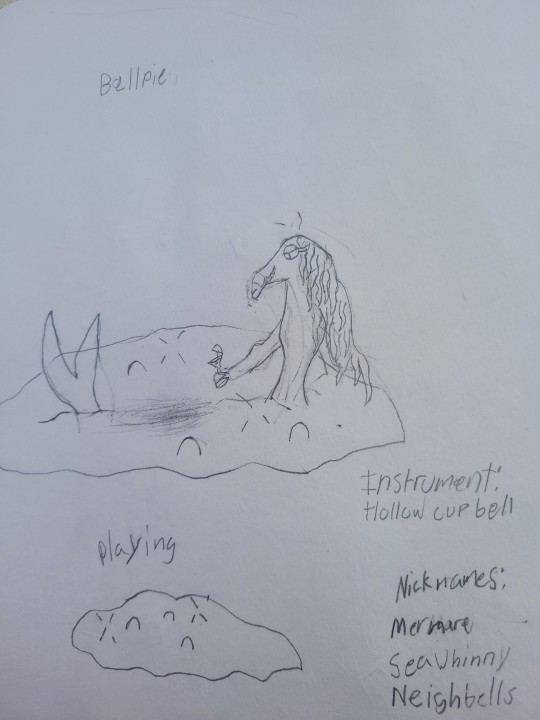
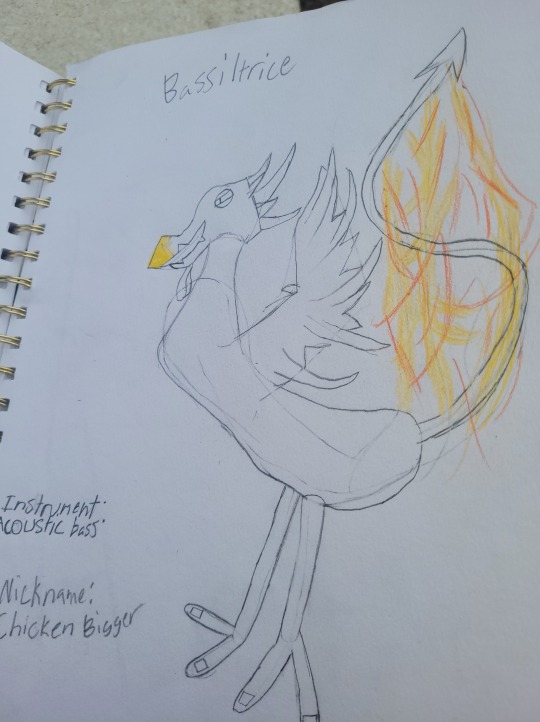

A work in progress for both their nicknames and their colors
#I haven't drawn Bassiltrice's elements yet but he's (Yes I'm giving them unofficial pronouns) a double fire and chaos element#Yes he isn't in a air elements and Yes he's based of a bird that will be explained in his bio#The theme of all of them are mythological multi animal beasts#No specific mythologies#my singing monsters#msm oc
2 notes
·
View notes
Text
Every generation of shows and media will always have their own version of superwholock. And as much as how the internet cringes at superwholock it's always gonna be an expected phenomenon because people will always find different media that they enjoy and they will always want to see them together. And there's nothing really that bad about it because it's made with pure fun.
So yeah, enjoy your superwholocks. Enjoy your Rise of the Brave Tangled Dragon. And enjoy your pinescones and morditwi. What matters is that your having fun with what you're doing. And if people are bothered by it then that's their problem.
#fandom stuff#posting this because I started looking into ben 10 crossovers again#gonna be honest it really does feel like its own genre#like the whole teenage chosen one needing to juggle highschool and saving the world thing#idk much thoughts about them and how the trauma and expectations placed on them is such a specific experience that#people from their world may not be able to understand hence why it's a fun idea to have ben 10 interact with people like jake long#also I grew up watching them and the idea of your favs interacting would have any 8 yr old foaming in the mouth#and I guess reading excerpts of greek heroes in legends along with common themes and archetypes in different stories and epics#makes me think about these tropes and archetypes and how these myths affect people#or is affecting me right now#but yeah the superwholock thing#I kinda remember how in the post-homerica and in retellings of jason and the argonauts they sometimes put in their have heroe in there#like oh yeah herakles was in the argo along with that one guy he supposedly killed in one of his myths#along with you oyher fave greek heroes#yeah they were all in the argo with Iason#and you know in the trojan war? actually the amazonian queen hyppolita was there and inspired a short lived feminist revolution in Troy#while killing so many of the greek armies#although I haven't checked my sources in a long time#but yeah humanity has always been putting their favorite heroes together for as long as we could remember#so the superwholock phenomena is pretty normal in literature and mythology#idk idk where I'm going with this now and I'm just rambling at this point and there's so much for me to think about#so yeah#marge's stuff#superwholock#rise of the brave tangled dragons#honestly idk how else to tag this#cringe culture is dead#have fun#disclaimer I am not in the superwholock fanbase nor the other one#the most I got into were gravity falls crossovers that happen here and there
1 note
·
View note
Text
this is sick cuz ive literally been thinking abt greek mythology so often lately and now i can think abt it MORE
#specifically the pjo brand of watered down greek mythology and my self insert in relation 2 that lol#but now i can think of hades brand of greek mythology and creating a self insert 4 that lolzies#i wonder if w the water level we get some sea monsters or themed characters bc if so aheem heem
1 note
·
View note
Note
I really like all of those various Darkners that showed up all of a sudden. I am guessing they are the common enemies of the Reflected Ruins?
Yep, they are just regular Darkners you would find around this Dark World.
I actually made a new ref sheet that features all of the designs.
They're mostly based on things that you find around Asgore's shop/living quarters. Though they all have a Greek mythology theme for "Knightly" reasons. The regular Darkners are specifically based on creatures/characters/story elements from Greek mythology (especially proud of Mr. Argu in particular with how I tied the designs elements together. Curious if anyone gets my thought process behind it, without me having to explain it.)

I guess one of them is spoilers, but whatevs
432 notes
·
View notes
Text
In addition to my Monkey Man post from earlier, the always kind & sweet Aparna Verma (author of The Phoenix King, check it out) asked that I do a thread on Hijras, & more of the history around them, South Asia, mythology (because that's my thing), & the positive inclusion of them in Monkey Man which I brought up in my gushing review.
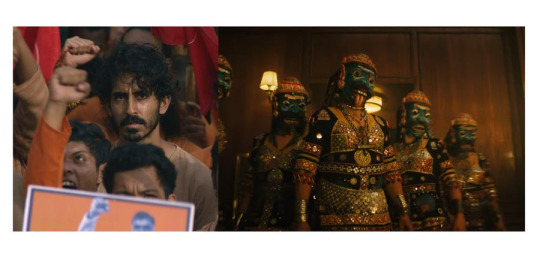
Hijra: They are the transgender, eunuch, or intersex people in India who are officially recognized as the third sex throughout most countries in the Indian subcontinent. The trans community and history in India goes back a long way as being documented and officially recognized - far back as 12th century under the Delhi Sultanate in government records, and further back in our stories in Hinduism. The word itself is a Hindi word that's been roughly translated into English as "eunuch" commonly but it's not exactly accurate.
Hijras have been considered the third sex back in our ancient stories, and by 2014 got official recognition to identify as the third gender (neither male or female) legally. Pakistan, Nepal, Bangladesh, and India have accepted: eunuch, trans, intersex people & granted them the proper identification options on passports and other government official documents.
But let's get into some of the history surrounding the Hijra community (which for the longest time has been nomadic, and a part of India's long, rich, and sometimes, sadly, troubled history of nomadic tribes/people who have suffered a lot over the ages. Hijras and intersex people are mentioned as far back as in the Kama Sutra, as well as in the early writings of Manu Smriti in the 1st century CE (Common Era), specifically said that a third sex can exist if possessing equal male and female seed.
This concept of balancing male/female energies, seed, and halves is seen in two places in South Asian mythos/culture and connected to the Hijra history.
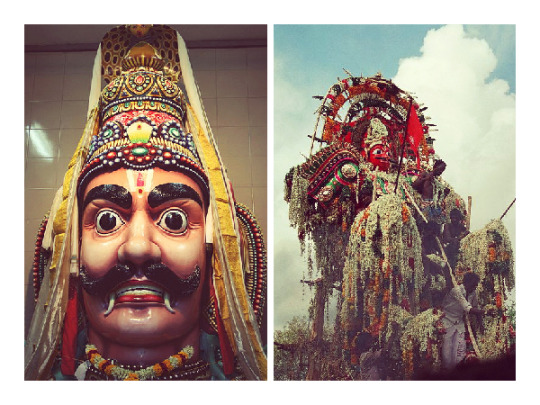
First, we have Aravan/Iravan (romanized) - who is also the patron deity of the transgender community. He is most commonly seen as a minor/village deity and is depicted in the Indian epic Mahabharata. Aravan is portrayed as having a heroic in the story and his self-sacrifice to the goddess Kali earns him a boon.
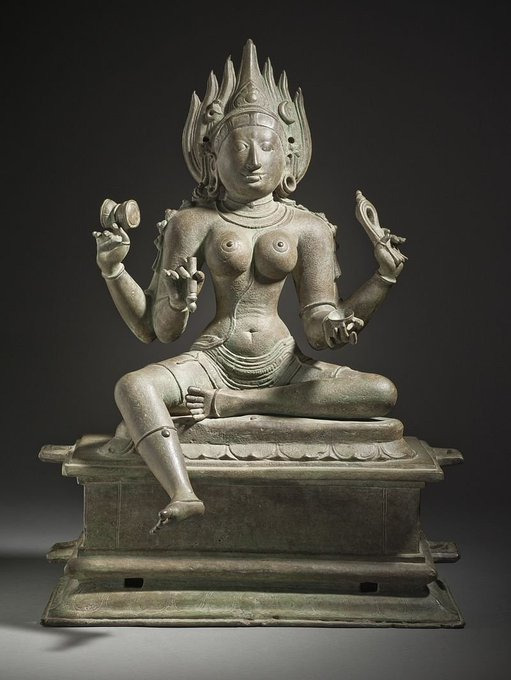
He requests to be married before his death. But because he is doomed to die so shortly after marriage, no one wants to marry him.
No one except Krishna, who adopts his female form Mohini (one of the legendary temptresses in mythology I've written about before) and marries him. It is through this union of male, and male presenting as female in the female form of Mohini that the seed of the Hijras is said to begun, and why the transgender community often worships Aravan and, another name for the community is Aravani - of/from Aravan.
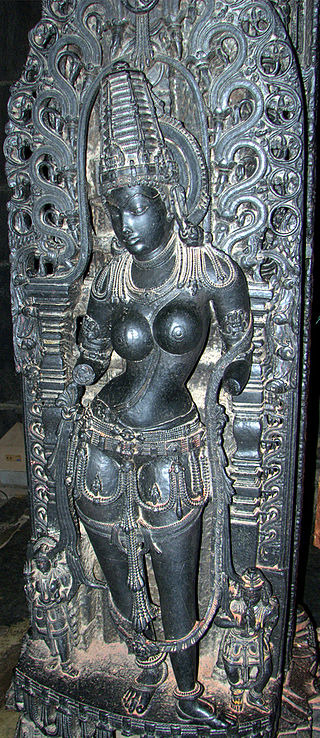
But that's not the only place where a gender non conforming divine representation can be seen. Ardhanarishvara is the half female form of lord Shiva, the destroyer god.
Shiva combines with his consort Parvarti and creates a form that represents the balancing/union between male/female energies and physically as a perfectly split down the middle half-male half-female being. This duality in nature has long been part of South Asian culture, spiritual and philosophical beliefs, and it must be noted the sexuality/gender has often been displayed as fluid in South Asian epics and the stories. It's nothing new.

Many celestial or cosmic level beings have expressed this, and defied modern western limiting beliefs on the ideas of these themes/possibilities/forms of existence.
Ardhanarishvara signifies "totality that lies beyond duality", "bi-unity of male and female in God" and "the bisexuality and therefore the non-duality" of the Supreme Being.
Back to the Hijra community.
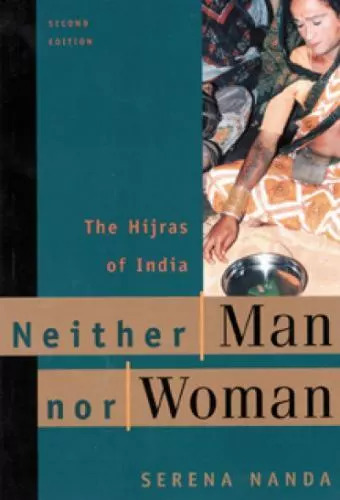
They have a complex and long history. Throughout time, and as commented on in the movie, Monkey Man, the Hijra community has faced ostracization, but also been incorporated into mainstream society there. During the time of the Dehli Sultanate and then later the Mughal Empire, Hijras actually served in the military and as military commanders in some records, they were also servants for wealthy households, manual laborers, political guardians, and it was seen as wise to put women under the protection of Hijras -- they often specifically served as the bodyguards and overseers of harems. A princess might be appointed a Hijra warrior to guard her.
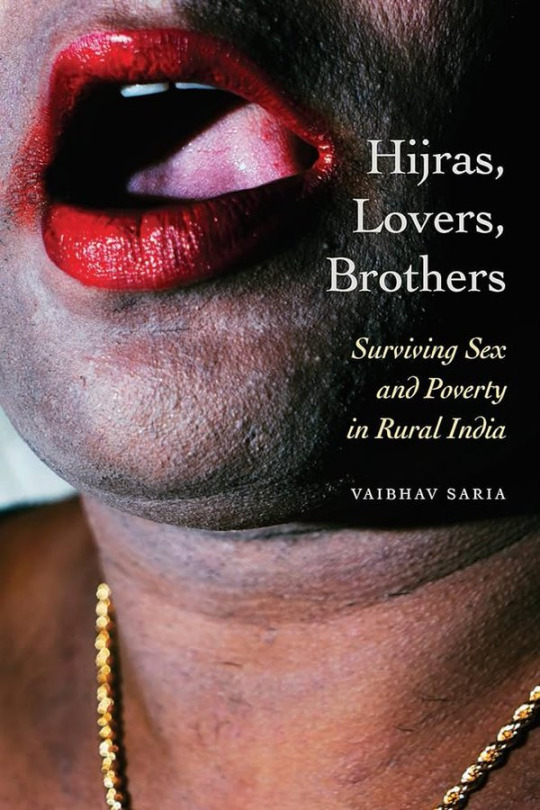
But by the time of British colonialism, anti-Hijra laws began to come in place folded into laws against the many nomadic tribes of India (also shown in part in Monkey Man with Kid (portrayed by Dev Patel) and his family, who are possibly
one of those nomadic tribes that participated in early theater - sadly by caste often treated horribly and relegated to only the performing arts to make money (this is a guess based on the village play they were performing as no other details were given about his family).
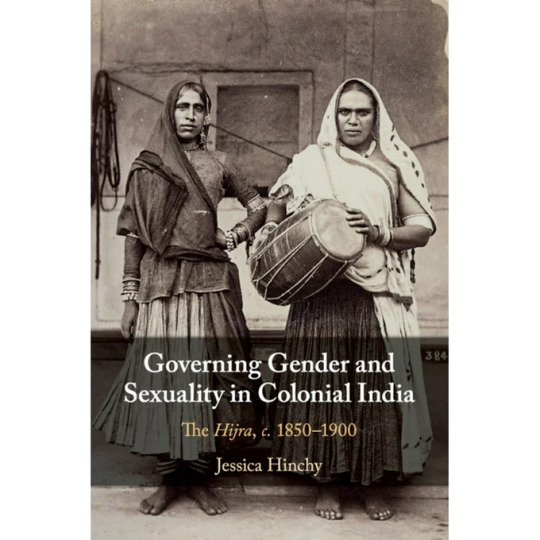
Hijras were criminalized in 1861 by the Indian Penal Code enforced by the British and were labeled specifically as "The Hijra Problem" -- leading to an anti-Hijra campaign across the subcontinent with following laws being enacted: punishing the practices of the Hijra community, and outlawing castration (something many Hijra did to themselves). Though, it should be noted many of the laws were rarely enforced by local Indian officials/officers. But, the British made a point to further the laws against them by later adding the Criminal Tribes Act in 1871, which targeted the Hijra community along with the other nomadic Indian tribes - it subjected them to registration, tracking/monitoring, stripping them of children, and their ability to sequester themselves in their nomadic lifestyle away from the British Colonial Rule.
Today, things have changed and Hijras are being seen once again in a more positive light (though not always and this is something Monkey Man balances by what's happened to the community in a few scenes, and the heroic return/scene with Dev and his warriors). All-hijra communities exist and sort of mirror the western concept of "found families" where they are safe haven/welcoming place trans folks and those identifying as intersex.
These communities also have their own secret language known as Hijra Farsi, which is loosely based on Hindi, but consists of a unique vocabulary of at least 1,000 words.
As noted above, in 2014, the trans community received more legal rights.
Specifically: In April 2014, Justice K. S. Radhakrishnan declared transgender to be the third gender in Indian law in National Legal Services Authority v. Union of India.
Hijras, Eunuchs, apart from binary gender, be treated as "third gender" for the purpose of safeguarding their rights under Part III of our Constitution and the laws made by the Parliament and the State Legislature. Transgender persons' right to decide their self-identified gender is also upheld and the Centre and State Governments are directed to grant legal recognition of their gender identity such as male, female or as third gender.
I've included some screenshots of (some, not all, and certainly not the only/definitive reads) books people can check out about SOME of the history. Not all again. This goes back ages and even our celestial beings/creatures have/do display gender non conforming ways.
There are also films that touch on Hijra history and life. But in regards to Monkey Man, which is what started this thread particularly and being asked to comment - it is a film that positively portrayed India's third sex and normalized it in its depiction. Kid the protagonist encounters a found family of Hijras at one point in the story (no spoilers for plot) and his interactions/acceptance, living with them is just normal. There's no explaining, justifying, anything to/for the audience. It simply is. And, it's a beautiful arc of the story of Kid finding himself in their care/company.
#hijra#trans representation#monkey man#dev patel#transgender#trans rights#trans rights are human rights#third sex#indian history#indian culture#colonialism#imperialism#south Asian mythos#South Asian myths#Aravan#Iravan#Mahabharata#hindu mythology#hindu gods#kali goddess#krishna#hindu mythology art#Ardhanarishvara#Shiva#Parvarti#sexuality#gender fluid#fluid sexuality#trans community#transgender rights
645 notes
·
View notes
Text
On Barbie
I'd like to share my thoughts on John’s choice to house Alecto in a body that looks like Hollywood Hair Barbie.
To the best of my recollection over the past year, I've seen several people claim that Barbie being a famously unattainable beauty standard for women and arguably a sex symbol was irrelevant to John's decision to make Alecto a Barbie lookalike, and that rather the main impetus for this decision of John’s was his trauma, gender non-conformity, internalized homophobia, and desire to return to the comfort of childhood. This argument posits that John's decision had little or nothing to do with patriarchy, misogyny, objectification of women, or impossible beauty standards placed on women by men.
I empathize with the above position to a certain extent — it's absolutely crucial to remember and consider in our analyses that John is a queer working-class Indigenous man.
But………....................
John is not a real person. He is a character written to advance plot, themes, and political commentary within a carefully crafted story.
If I'm Tamsyn Muir writing John 1:20 in Nona the Ninth, and the point I want to make about my character is specifically and only that he is struggling with self-doubt, trauma, gender non-conformity, internalized homophobia, and yearning for the comfort of home and childhood — and I want to say nothing about patriarchy and misogyny?
I'm not having him make the soul of the earth into a Barbie!
I'd be having him model Alecto after a completely different popular 1990s toy for girls, like a Polly Pocket, or Betty Spaghetti, or a Raggedy Ann doll, or another doll that doesn't carry the same connotations as Barbie. Or, hell, I’d be having John make Alecto look exactly like his mum, or his nan, or female Māori mythological figures from stories he must have heard from his nan in childhood, like Papatūānuku, or the first woman, Hineahuone, who was made from earth.
I'm not smarter or more creative than Tamsyn, and the above ideas are just the alternatives I thought of in five minutes that would have specifically symbolized John's personal trauma and nothing else.
But Tamsyn didn't do that. Tamsyn picked Barbie specifically. I think that's worth taking into consideration.
Let’s examine exactly what John says in John 1:20.
Hollywood Hair Barbie's physical appearance comes first in the list of reasons why she was his favourite, and her other characteristics come last. He lists two physical traits and one non-physical trait of hers. “My favourite was her old Hollywood Hair Barbie,” he murmured. “I loved her little gold outfit and her long yellow hair. She was the best. She got to have all the adventures.”
He discards as an option a model of a woman who doesn't conform to patriarchal, Eurocentric beauty standards specifically because of her appearance: “There was also a Bride’s Dream Midge, but Mum had cut Midge’s hair into this weird mullet.”
He chooses a blonde Barbie body that he can mould into and mentally map onto glamourized versions of women created by men through the ages. “I made you look like a Christmas-tree fairy … I made you look like a Renaissance angel … I made you Adam and Eve … Galatea. Barbie. Frankenstein’s monster with long yellow hair.”
Our famous cultural images of Renaissance angels are all idealized depictions of women made by men — Raphael, Titian, Albrecht Dürer, etc. Frankenstein's monster, a man loathed and discarded by his creator, is a more nuanced comparison... but the only thing John notes is that his version has long yellow hair.
I'm not even getting into the whiteness (or the plastic-ness) of it all, but three of John's comparisons here are specifically coded as white women considered beautiful by Eurocentric standards in the Western cultural imagination (Christmas tree toppers, Renaissance angels, and Barbie), and the others are often depicted as white.
Galatea specifically is such a telling comparison. This myth is the story of a man caging and controlling his idealized, beautiful female creation, which exactly parallels John’s goals with Alecto: “From my blood and bone and vomit I conjured up a beautiful labyrinth to house you in. I was terrified you’d find some way to escape before I was done.”
Given all of this, I genuinely think that John's choice of Barbie as a model for Alecto was intended to position John as a symbol of patriarchy, misogyny, and objectification of women, through both a political and religious lens. Tamsyn is way, way too smart to have not made a careful, considered, intentional choice here.
John didn’t make Alecto into a Māori goddess from his nan’s stories. He didn't make her into a cheerful Raggedy Ann. He made her into a beautiful, blonde Hollywood hair Barbie.
324 notes
·
View notes
Text
A Basic Guide to Vedic Astrology
I think many of you are new to Vedic astrology, so I thought I'd give a little intro to some of the concepts, terminology etc
First and foremost, Vedic astrology dates back to 5000 BC - 10,000BC, which means it only takes into account Sun, Moon, Mercury, Venus, Mars, Jupiter, Saturn and the 2 nodes of the Moon, Rahu & Ketu along with your Ascendant. Outer planets like Uranus, Neptune, Pluto along with asteroids are NOT calculated as most of them were discovered only in the last 2-3 centuries.
A conjunction takes place when two planets are placed in the same nakshatra within 5 degrees of each other. Even if they are placed more than 5 degrees apart, so long as they are in the same nakshatra, they can to some extent be considered as conjunct (the effect will be less potent than an exact conjunction basically) BUT if you have Sun in Ashwini and Venus in Bharani, you DO NOT have Sun conjunct Venus in Aries, that is NOT how it works. Those two nakshatras have entirely different themes, mythologies, purposes, deities, planetary influences and lessons, how on earth can they be considered "conjunct"???
That said, wherever you have a conjunction in your chart will have a major influence on you. It is a very potent energy. Dont ask me if having Saturn conjunct Ketu in Ashwini makes you a Saturnian or a Ketuvian because that's not the point, its that those two planets have a specific relationship with each other in your context and to understand the functioning of one, you must look at the other (along with its placement, aspects etc etc)
There are 12 rashis, corresponding to zodiac signs and each rashi is divided into 2 or more lunar mansions called "nakshatras". If you've wondered why say Arieses all act so different, its because they're either UBPs or Revatis in their Vedic chart, contributing to vastly different personalities.
In Vedic astrology, we have the concept of 7 charakarakas all of which indicate a different purpose:
Atmakaraka aka the soul indicator. it is the planet at the highest degree and represents your soul/being. its your compass and points towards the calling of your soul
2. Amatyakaraka, it typically points to your career/profession and works alongside your atmakaraka. it is the planet at the second highest degree
3. Bhratrukaraka (planet at 3rd highest degree) points to relationships with siblings
4. Matrukaraka ( planet at fourth-highest degree in your chart) signifies your relationship with your mother or maternal figures. It represents the nurturing qualities within you and helps illuminate your connection to your mother or motherly figures in your life.
5. Putrakaraka (planet with the fifth-highest degree in your chart) reveals your approach to parenting and your potential for creativity. It provides insights into your connection with your children and your capacity for artistic expression.
6. Gnatikaraka (the planet with the sixth-highest degree in your chart) indicates obstacles and adversaries in your life. It reflects your ability to overcome challenges and confrontations, making it a valuable guide for navigating life’s hurdles.
7. Darakaraka (the planet at the lowest degree) it is associated with your spouse and romantic relationships. It uncovers the qualities you seek in a partner and offers insights into how you relate to your significant other. Understanding the Darakaraka can provide clarity on your love life and partnerships.
HOW TO STUDY NAKSHATRAS:
Read about the mythology behind your nakshatras. This helps shed light on its nature.
Look at your nakshatra's yoni consort. Read about what the yoni animal symbolically represents
Similarly, read about your nakshatra's deity, ruling planet, other naks under the same planetary influence etc
There are 4 purusharthas (aka motivations) in vedic astrology according to which nakshatras are classified. understanding the different classifications behind each nak helps us understand its nature better
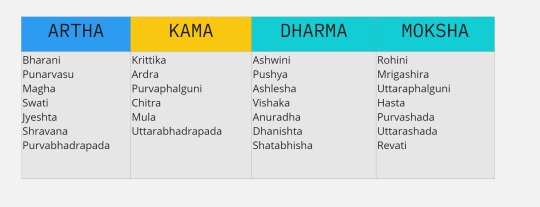
similarly naks can also be classified by their ganas which describe the nature of these naks:
Deva = godly, Manushya = humane, Rakshasa = demonic
if you have a rakshasa gana nak, it does not mean you're a demon. it just points towards traits like selfishness, lack of generosity etc AND the person you are is sum of your whole chart, not just the gana of one nak, so don't beat yourself up

Naks are also classified on the basis of their qualities of which there are 7
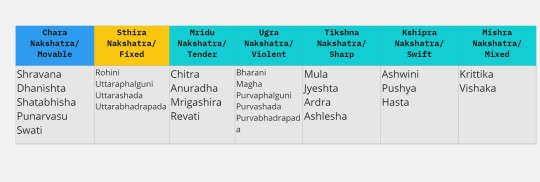
they can also be classified on the basis of caste:

(all tables, pyramid etc by me so any mistake is mine oopsies)
4. Chart Ruler
The ruling planet of your ascendant sign is your lagna lord. If you're Mrigashira Rising, then your lagna lord is Mercury/Venus (based on whether your nak falls into the Taurus portion or the Gemini portion).
5. Navamsa or D9 chart
Look at your D9 after you've studied your D1 otherwise it'll feel like too much info you don't fully understand. Navamsa is consulted along with your D1/Birth chart. you can think of it as D1 promises certain things and D9 is if/how those things materialise. its like part 1 and part 2 of a story
I can't think of anything else that should be covered🤡but if you have doubts you can ask!!
I hope this was helpful!!
#astrology notes#astrology observations#sidereal astrology#vedic astro notes#nakshatras#astrology#vedic astrology#astro notes#astro observations#astroblr#jyotish
696 notes
·
View notes
Text
There's a really quick joke in BTAS that genuinely got me. It's in the episode "Eternal Youth", where Alfred and his girlfriend(?) Maggie Page go to a health spa being run by a mysterious woman named Demeter. Of course, this turns out to be Poison Ivy.
And when Batman has to go to this spa to save Alfred and Maggie, and he's confronted by Poison Ivy as she reveals herself, he says (I'm paraphrasing because I can't remember exactly) something like, "Only you, Poison Ivy, would name yourself after the Greek goddess of plants."
Poison Ivy has two henchwomen in this episode (who unfortunately never show up again) calling themselves Lily and Violet, also present. And either Lily or Violet responds, with something like, "Ooh, someone graduated high school literature."
And then the confrontation continues, but that joke fucking got me, because that IS a common level of mystery-crafting in comics and also this show specifically. Superheroes apparently have to know their Greek and Roman mythology (not just because of Wonder Woman's rogues) because there's a high chance a villain is going to pretentiously name some project by looking up mythology in an encyclopedia.
It also makes me think that it must be REAL easy for the Gotham rogues to frame each other for anything, which is sure to cause grudges and fights between them if it gets found out. Everyone has conveniently themed themselves! Maybe it fools Batman sometimes and maybe it doesn't!
"Aha, a green envelope with a purple question mark! It must be the Riddler again," says Robin. "When did he get out?"
But Batman just inspects the card and says, "Wrong type of paper. Wrong shade of green. Nygma is picky about the quality of his printing. Someone picked this card up from the greeting card section of the local pharmacy."
"Oh, huh, you're right," Robin replies. "Holy marketing mistake, Batman, why do they even sell these?"
"I wish they wouldn't."
#tossawary dc#bruce wayne#dick grayson#the riddler#poison ivy#alfred pennyworth#maggie page#fic ideas
922 notes
·
View notes
Text
𝔞𝔰𝔱𝔯𝔬𝔩𝔬𝔤𝔶 𝔬𝔣 𝔱𝔥𝔢 𝔟𝔩𝔞𝔠𝔨 𝔤𝔦𝔯𝔩 𝔦𝔫𝔣𝔩𝔲𝔢𝔫𝔠𝔢

happy black history month for my african americans! hope you have an amazing month filled with prosperity and success!
♇ before i get into this post, the celebrities/influencers that will be mentioned are not in order of who are the most influential! the people i picked out were specifically picked out by me so if there's someone i left out, it is most likely because i already used them for a similar previous research or i did not want to :)
♇ this isnt only a post about the influence black girls have, its also black women who are known for their beauty, you might not know them by name but if you research them on pinterest, you'll see all of them have been used in black girls mood boards.
+ this is also a fame indicator post.
THE DEGREES EXPLAINED HERE IS AIDED BY JANDUZ ALONG WITH MY OWN RESEARCH!
paid chart readings :)

the public figures i have used are rihanna, itslos/lorraine smith, kenza, vinetria, lauren london, jodie woods, maya jama, lori harvey, JT, aaliyah, jayda wayda and india love.
ASCENDANT
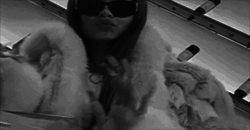
♇ the ascendant sign that appeared the most was the ascendant in aquarius, it is not a surprise that the sign of influence, trends and the internet appeared the most in the ascendant research. the person in the gif above is known as indialove, a known tumblr girl who set the wave for many more black it girls to take their own stage. perhaps there was someone before her but india is the most known.
though take this with a grain of salt, it is a little booster, the modality of the ascendants that appeared the most was the fixed ascendant.
and the element that appeared the most was air.
ASCENDANT ASPECTS ⬎
♇ moving on, the aspect the ascendant made the most was the ascendant aspecting neptune, neptune is one of the planets of glamour and projection, this could link to how people found these people to be inspirations and living their lives through them.
ASCENDANT DEGREES ⬎
♇ lastly, the degree that appeared the most for the ascendants was the 15°, a gemini degree, a degree that is known for being inventive, aiding someone to have a lot of inventive ideas. this degree can bring fame and wealth.
SUN

♇ the sun sign that appeared the most was the sun in capricorn, in greek mythology the Greek God that ruled over capricorn was Pan, [Saturn is ruled by Kronos/Cronous], one of the commodities Pan ruled over was being a shepherd, a shepherd rules the sheep [followers] and whatever the shepherd does, the sheep follow, which could be symbolise the trends and styles that are copied and admired.
the second sign that appeared the most was leo, and the second was sagittarius.
the sun element that occurred the most was fire and the modality was cardinal, take these with a grain a salt, they are little boosters.
SUN HOUSE ⬎
♇ there wasnt a specific house the sun appeared in the most, but if we used mode calculation, the house the sun appeared in the most was the 1H. but the sun appeared in cardinal houses a lot.
SUN ASPECTS ⬎
♇ moving on, what i had realised is that the planet that aspected the sun a lot was the sun aspecting mars, the sun ruling themes like persona, style and the mars rules someone taking the first step/doing something first.
sun aspecting mercury was the second aspect that appeared the most, mercury ruling over trends and the internet. [so does uranus].
SUN DEGREES ⬎
♇ although, the degree that repeated the most was the 2°, a taurus degree, also a degree that is known for its beauty.
the second degree that appeared the most was the 14°, another taurus/venusian degree. within the research i couldnt help but notice that fixed degrees appeared a lot.
MOON

♇ the moon sign that repeated the most was the moon being in taurus, taurus a sign of beauty and the moon being a planet of audience helps an individual become notifiable because of their appearance.
the second moon sign that appeared the most was leo and the third was pisces, think of it as a mini boost since they were not first.
the element that appeared the most within the moon signs was the element earth.
MOON HOUSE ⬎
♇ the house the moon appeared in the most was the Moon being in the TWELFTH HOUSE, the twelfth house is an underrated house of fame [will explain in another post], and is also ruled by neptune/pisces which are the commodities of glamour and camera.
MOON ASPECTS ⬎
♇ the planet that aspected the moon the most was neptune, [moon-neptune], moon the celestial planet that rules the face and neptune the planet of glamour and beauty.
the second aspect that appeared the most was the moon aspecting mars.
MOON DEGREES ⬎
♇ to finish with the moon content, the degree that the moon was in the most within my research was the moon in the 26°, a Taurus Degree that speaks about receiving flattery from other people. the 26° is also a Venus degree.
on the other hand, i noted that there was a lot of cardinal and fire degrees.
MERCURY
[mercury can rule trends and social media like uranus/aquarius, mercury is more quick and uranus has is more around longevity]

♇ the mercury sign that appeared the most within the research was capricorn in mercury, the same explanation that i had for the capricorn sun can be said here. especially since it is in mercury, the sign of flashy trendiness.
the second sign that appeared the most was mercury in scorpio.
though for modality, fixed mercury appeared the most and for the element, it was earth.
MERCURY HOUSE ⬎
♇ the house mercury appeared in the most was the 11H, its not a surprise uranus/saturnian energy is coming to play. the 11H as i have said before is centred around longevity in trends and just things being passed around on social media. the 11H will help the mercury planet bring bigger attention.
on the other hand, mutable houses appeared the most for mercury, and for the element it was air.
MERCURY ASPECTS ⬎
♇ for this part of the research, this planet really aspected mercury to the point that it actually really surprised me, and once again like it has to other planets i have written about, the planet that aspected mercury the most was neptune. mercury a social planet being paired with a beauty and glamour planet, as a summary, imagine how people quickly move onto the next beauty trend like, "mafia's/mob's wife", "office siren", etc. that is basically mercury-neptune, the mercury lacks the longevity of the "trend".
the second mercury aspect that had appeared was mercury aspecting saturn.
MERCURY DEGREES ⬎
to finish with this party of the research, the mercury degree wasnt really precise, but within all the degree research for the mercury planet, air degrees occurred the most, and fixed degrees.
VENUS
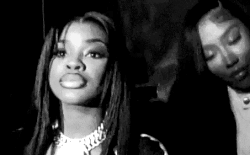
♇ moving onto venus, the sign that appeared the most for venus, was once again capricorn. same explanation that i used for sun can be used here.
the second sign that appeared the most was aries, not a surprise.
take it with a grain of salt, but the element that occurred the most was air venus.
VENUS HOUSES ⬎
♇ now the house venus appeared in was mainly mutable houses, venus will be able to adapt to whatever it is in, but since virgo is a mutable sign, venus might have to work harder since it is in its fall there.
VENUS ASPECTS ⬎
♇ the planet that aspected venus the most was mercury, a planet of trends and social media.
the second planet that appeared the most was venus aspecting saturn.
VENUS DEGREES ⬎
to finish with the venus section, the degree that appeared most for venus was the 23°, i dont know it if it s known fact, but the 23 degree is a beauty degree. it also talks about artistic gifts, so people with this degree in venus or in their big six are likely people who know how to dress.
MARS

♇ the sign that appeared in mars the most was sagittarius, i dont know if i said it on my blog or on a previous discord, but i remember mentioning the sagittarius in mars is a fame indicator overall, with the jupiterian influence in mars, the individual is more passionate and ambitious to complete their goals, they can be great at speaking things into reality along with their charisma and humour aiding them to be approved by the people around them.
the second sign that appeared the most was capricorn and the third was aquarius.
MARS HOUSE ⬎
♇ the house mars appeared in the most was frequent, but modality wise the house mars appeared in the most was fixed houses. [2H, 5H, 8H and 11H are fixed houses]. makes someone have a straight vision for what they want.
MARS ASPECTS ⬎
♇ the aspect mars made to a planet the most was venus, not a surprise since this aspect can make someone very interested in "sexiness", "beauty", "fashion", and having an appeal in general. people with this aspect tend to attract the opposite sex a lot, [attention wise].
the second aspect to appear the most was mars aspecting saturn.
MARS DEGREES ⬎
♇ the degree mars appeared in the most was the 27°, a Gemini Degree, the degree in gemini itself can speak of success, especially if they pursued anything artistic/creative.
the second degree to pop up the most was the 28°, a Cancer degree.
JUPITER
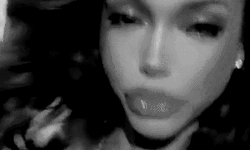
[you may wonder why i put jupiter here, but jupiter amplifies a sign, and it is also linked to how people worship/praise you, i have a post about it here].
♇ lastly for the planets, the jupiter sign that occurred the most was jupiter in capricorn, what i said for the sun in capricorn applies here as well. on the other hand, jupiter in capricorn strengthens someone longevity and authority over what they're good at. it gives honour and respect and sort of makes someone the face of a sub-genre they're in.
the second jupiter sign that appeared the most was libra and third was aquarius, take these with a grain of salt.
JUPITER HOUSES ⬎
♇ there wasnt a specific house jupiter was in the most, but i was able to identify that most houses were in water houses.
JUPITER ASPECTS ⬎
♇ the planet that aspected jupiter the most was jupiter aspecting saturn. same explanation i have for the jupiter in capricorn context above.
the second planet that aspected jupiter the most was the moon.
JUPITER DEGREES ⬎
♇ the degree that occurred in jupiter the most was cancer degrees. cancer which is governed by the moon rules over audiences, and jupiter with it adds more admiration and people having their eyes on you.
⟶ EXTRAS
PLANET DOMINANCE ⬎
♇ the top planet that appeared the most was saturn.
second was mars and third was uranus.
SIGN DOMINANCE ⬎
♇ the sign dominance that occurred the most within the research, was clearly capricorn!
second was aries and third was sagittarius.
ELEMENT DOMINANCE ⬎
♇ the element dominance that appeared the most within my research was earth.
in second place was fire.
MODALITY DOMINANCE ⬎
♇ the modality that repeated the most was cardinal.
second was fixed.
DEGREE[S] ⬎
♇ the degree that appeared the most was the 15°, a gemini degree that speaks of someone who is inventive and had many ideas. can bring fame and wealth.
second degree that appeared the most was the 7°, a libra degree, and the third degree that occurred the most was the 16°, a cancer degree.

thank you if you made it here! hope this post was resourceful :)
masterlist

#d4rkpluto#aquarius ascendant#india love#ascendant aspecting neptune#capricorn#capricorn sun#sun aspecting mars#vinetria#taurus moon#moon aspecting neptune#lauren london#capricorn mercury#mercury aspecting neptune#venus aspecting mercury#rihanna#sagittarius mars#mars aspecting venus#lori harvey#jupiter in capricorn#jupiter aspecting saturn#saturn#degree theory#JT#city girls
464 notes
·
View notes
Text
netflix posting a compilation of kaos tumblr posts featuring THIS SPECIFIC ONE is my last straw

that literally also describes dead boy detectives.
like kaos does look really great i fucking love mythology and i will probably watch it eventually!! this is annoyance at netflix not kaos as a show, it's just pissing me off a bit that they're giving this show SO much more attention and promotion than dead boy detectives got when they seem to have somewhat similar themes and target audiences
#not saying its the cast but its not evading me that this main cast features people like jeff goldblum and billie piper and david thewlis#whereas dbd was mostly lesser known/unknown actors#idk its just annoying me that this show is getting the promotion dbd deserved then posting posts that practically also describe dbd :((#if dbd got this much promotion i bet it would've been closer to the crazy viewing figures netflix apparently needed for renewal#dead boy detectives#kaos#dbda#fuck netflix#my dbda posts
159 notes
·
View notes
Text
As much as I love Disco Elysium, I think I was not prepared for Sacred and Terrible Air. Of course, I was expecting to know more about the world of Elysium as a whole, and Robert Kurvitz is a very good writer, but the thesis of the novel (and how it makes its points) flash-banged me.
Disco Elysium this is not, and it wasn’t supposed to be, but I think I can understand better now what the team at ZA/UM was getting at with this specific setting, and these specific narrative angles. Kinda messy, because it’s been a week since I finished it, but here are some things I’d like to highlight:
1. The pedophilia. I surely wasn’t expecting this to be such a central theme of the novel, but a lot of its main points revolve around it. The most interesting use of this, as a narrative device, is how the girlfriend of Jesper basically accuses him of being a pedophile because he cannot relate to the adults around him. He’s still obsessed with a girl he met when he was 13 years old, and fetishizes a scrunchie he stole from her bag two decades ago. Yeah, I guess Jesper, well into his thirties, is still in love with a 13 year old girl. His girlfriend is almost half his age, and they started dating when she was 15 years old and a lingerie model (!). Zigi mentions how pedophilia was a bougie disease, and well… That idea went right into my thought cabinet (I call it “Bougie Babies for Sale).
Still processing it.
Now, let’s go back to the rest of the main characters. With all this in mind, a pedophilic overtone covers their interest in these four missing girls, but Jasper is the only one who acts on it, sort of. Khan remains in a sort of arrested development (he still uses a shirt he had when he was 13), foregoing normal adult relationships, and Tereesz joins the police as an investigator with the idea of still finding them some day (essentially letting these eternally prepubescent girls define his entire existence), leading him to a very dark path. I wonder if the brutality they afford to the “actual” pedophiles in the story (Vidkun Hird and the Linoleum Salesman) comes from the realization that they are not that different?
2. Obviously, though, this fetishization of the Lund sisters is also a fetishization of the past. The novel states it in the first few pages; they disappeared twenty years ago, in a time that most conservative people remember as the “good old days”. Basically their version of the American Fifties. Now, being obsessed with the past is a running theme in both SaTA and DE, but the angle here is different.
I already said it: the past is not remembered, is fetishized with an almost sexual yearning by a lot of the male characters of the book. They want to be consumed by it (and lucky them! It will) and do nothing more than serve it. It reminds me of a poem by Yamil Nardil Sadek, which, translated to the best of my ability, goes like:
She awaits me
sitting on the bed,
wearing leather,
and armed to the teeth,
the Memory.
Yeah, that sums up Sacred and Terrible Air pretty well. Everyone is being consumed by the past, bite by bite, and enjoying it. Vidkun Hird, by the mythologized version of his tribe’s history; Sarjan Ambartsumjan, by a miniature ship model that requires constant, devoted thought or else it will disappear, the three main characters by the memory of that summer with the Lund girls. Even the Linoleum Salesman is being haunted and consumed, of sorts, by his sickness and dementia that only sometimes let him take a peek of the past. Beyond that, there are very few characters that do not spend time being followed by relentless ghosts. Literally, in the case of Zigi. Which brings me to…
3. The Pale. It was a really cool concept in Disco Elysium, and it’s an existential nightmare in Sacred and Terrible Air. It always was, really. But here it lets you take a look into it in a way that’s applicable in real life. The Pale is a metaphor for many things, but actually for a single one: A world where our current Capitalist reality facilitates both apathy and yearning for better days, often idealized in our collective pasts.
My favorite scene, one that was incredibly puzzling but so obvious in retrospect, is a beautiful speech by the ghost (?) of Ignus Nilsen to Zigi. I will just paste it here:
“I said terrible things, yes! I stood on a white horse, in a blizzard, and gave speeches. In the mountains, on the construction site… I swung my sword, with silver sunbeams on the hilt. And all around me fluttered white flags, crests of crowned horns made with silver thread, a pentagon between the prongs of the horns, the branches raised to heaven. Everyone who came here with me became happy, Zigi! Communism is powerful! Believe in Communism, it’s a burst of enthusiasm! I promise! It’s beautiful when you believe in a person, but without it…!”
“Without it, there is nothing.”
“Nothing. It was a blizzard, but it was bright, it was morning. Communism is white, it sparkles! Communism is the morning, it is a jubilation!”
The Pale begins to recede dangerously around the entroponaut.
The fucking Pale recedes with talk of Communism! At first it might appear a little heavy handed (yeah, Communism, by itself, could save the world). But then I got into how Communism could be a solution to the antipathy and chronic nostalgia that sustain Capitalism, and then it hit me. Nilsen, a literal ghost from the past, is talking about a future that could have been. That he wanted to accomplish. That people, probably, can still achieve. The Pale is not eternal, it can be pushed back. Because the Pale seems to subsist on the past, it abhors any talk of the future. A better future. That’s how we solve things, and for a central thesis, is not bad at all.
With that being said, and because I’m just rambling here while pretending I’m working, there are also some things that I just didn’t understand, but maybe it was because of the translation. The original novel is written in a very poetic style, and some of that is still here, but I still need to untangle…
1. The Man. It is said that the day the Lund girls disappeared, they were joined by a mysterious Man that nobody seemed to remember correctly. A character even suspects that she was remembering wrong. Now, the Pale erases people and memories retroactively, so maybe it had something to do with it, but… Who was that? Is there any theory about that Man, or I just missed something? Some scenes and narrations were tough to parse for me (my primary language is not English).
2. Was Malin Lund pregnant? That flash with the fetus was sudden and weird.
3. What was the significance of the three meat piroshkis? They mention that it was unusual that the girls bought them (and if you do the math, you can realize early on that they were not planning to get back home. That purchase didn’t leave them enough money for the bus fare back), but that’s it. Were they for the Man? Also, the narration mentions that Lund girls’ picnic basket contained “the kind of things girls like to eat”, so maybe they were planning to see the boys and bring them the kind of things boys eat? I’m overthinking that? The chapter actually titled “Three Meat Piroshkis” just left me even more confused.
4. I don’t understand how Khan’s pen works at all. The one he brought to the school reunion. That was the part I re-read the most. Anyway, even with that, I loved Sacred and Terrible Air. Definitely one of the most enthralling reads I had, with or without the background of Disco Elysium. I’d still like an official translation that could potentially solve the issues I had, but for now, a Top 10 Book for me.
Go for it now.
350 notes
·
View notes
Text
My problem with "The Vengeance Saga"
I don't know if this is an unpopular opinion but I'm a bit... disappointed by the Vengeance Saga.
Don't get me wrong, mechanically it's my favorite one yet. Every performance is incredible. The songs are bangers. But I can't help but feel it misses the point of "The Odyssey".
And this is a running problem I've had with Epic as a whole so bear with me while I air my thoughts.
"The Odyssey" is the story of pride. Of hubris. It always has been. Odysseus's pride, specifically. The reason the Gods come down so hard on Odysseus is because he's too proud. He believes himself above the Gods or at least above crediting them for his achievements. Anyone who's familiar with Greek Mythology knows that this is a common theme, a mortal becoming too full of themselves because of a gift the Gods gave them is a recurring thing.
Odysseus doesn't spare Polyphemus out of pity like in Epic, he does it so everyone can know who outwitted him and who overcame the monster.
I feel like earlier parts of Epic understand this as the theme. "Luck Runs Out" especially hits on it, and it feels like it comes to a head in "Ruthlessness" when Odysseus doesn't do the one thing that could get them out of this situation, humble himself before Poseidon and apologize. Instead, he makes excuses and Poseidon follows through with his threat.
I just feel like Odysseus beating Poseidon, humiliating him like he does in "Six-Hundred Strike" is antithetical to the theme of the story. Odysseus proves his pride right, and overcomes a God.
The whole point Poseidon pushes in "The Odyssey" is that no one is mightier than the sea. No matter how good or powerful you are, you have to respect the sea and nature.
I just feel like Ody's arc would be more complete if he did the one thing he didn't bring himself to do in "Ruthlessness" and apologizes to Poseidon, at last breaking the pride that got his men killed.
While watching Odysseus triumph like that might be more immediately rewarding, it feels narratively cheaper. It doesn't even complete his arc as a monster, since we already saw the culmination of that in the Thunder Saga where alienated the rest of his crew and got them killed because of that.
Being a monster didn't work, but here it does?
I dunno, just how I feel.
#Epic#Epic the Musical#The Odyssey#The Thunder Saga#The Vengeance Saga#Odysseus#Poseidon#Ruthlessness#Six Hundred Strike#600 Strike#theme#analysis#Luck Runs Out#critique#literary critique#Polyphemus#pride#hubris#Greek Mythology#Mythology#Homer
130 notes
·
View notes
Note
hey there, would you mind telling me a bit about Lilith and your practice with her? I’ve been trying to do some research on her modern worship, offerings, and signs, but it can be really difficult to find anything that’s serious when there are so many references to her in pop culture :/
Okay so Lilith is extremely, and I mean extremely complicated.
Contrary to popular belief, “Lucifer” isn’t actually a name, but a title. The name Lucifer means “light bringer” in reference to Venus as she appears in the morning, but any “light bringer” can be considered a Lucifer. Prometheus for example, the man who stole fire from the Gods to give light to humanity, is a Lucifer. And so, there are actually many different entities that have taken the role of a Lucifer throughout history and in various different retellings. Eosphorus is the name of the deity that was revered by the Greeks as Venus, but Lucifer is a title that many different figures have taken on depending on the context.
Why do I bring up Lucifer? Because he and Lilith are very similar in that regard. Our earliest mentions of Lilith throughout history paint her not as an individual but as a species of night demon that frequently takes the form of an owl, she was known to bring crib death and miscarriage.
In the myth, Inanna and the Huluppu tree, a huluppu tree (a type of willow) is planted by the banks of the Euphrates River. The tree is tended and nurtured by the goddess Inanna, who plans to use its wood to craft a throne and a bed for herself. However, as the tree grows, it becomes infested with three troublesome creatures:
A serpent that makes its home at the roots of the tree. (What troublesome serpents have been portrayed in another mythology having to do with magical trees? HMM!)
The Anzu bird (sometimes described as a mythical lion-headed eagle) that builds its nest in the branches.
The Lilitu (a female demon or spirit) that makes her lair in the trunk.
Inanna, distressed by these creatures occupying her tree, calls for help from her brother, the sun god Utu (or Shamash). When Utu does not assist her, she turns to the hero Gilgamesh. Gilgamesh comes to her aid and, with his great strength, drives away the serpent, the Anzu bird, and the Lilitu. He uproots the huluppu tree and uses its wood to craft a throne and a bed for Inanna, fulfilling her original intention. Consider that it is a human, not the God of the sun, who helps Inanna with this problem. Interesting.
The inclusion of these three very specific creatures occupying this important tree tended to by the Goddess of love, to her dismay, are very important. Especially when he consider how Inanna’s visual depictions have been syncretized with Lilith. The idea of a serpent (perhaps a Lucifer) , an Anzu bird (described quite similarly to some depictions of abrahamic angels, specifically those like the cherubim) and a Lilith being “driven away” from this mythical tree are notable, especially because these are all symbols associated with Inanna herself.
Inanna, one of the most complex deities in Mesopotamian mythology, embodies aspects of fertility, love, war, and the underworld. Inanna's association with snakes can be seen in her connection to the underworld and her transformative journeys. In her descent into the underworld, Inanna removes one magical garment as she continues into the deathly realm. Just as the snake sheds its skin, Inanna sheds her power and identity as she descends, only to be reborn and restored.
Inanna is frequently depicted with wings, highlighting her divine nature and authority. The Anzu bird in the Huluppu Tree myth, while initially a source of trouble, also connects to the theme of overcoming chaos, which aligns with Inanna's role as a powerful deity who brings order.
Lilith, often depicted as a demoness, represents untamed feminine power, independence, and sometimes chaos. In later Jewish mythology, she is considered a night demon, but her roots trace back to earlier Mesopotamian beliefs. Her inclusion in Jewish mythology is summed up in the verse Isaiah 34:14: "Wildcats shall meet with hyenas, goat-demons shall call to each other; there too Lilith shall repose, and find a place to rest." (Hm… I wonder WHERE she will find a place to rest? Perhaps in a… magical tree?)
In Jewish mysticism, the feminine side of the tree of life is what creates the potential for evil. Even though it is the lightest, brightest, goodest form of feminine energy, for some reason, every time, disobedience pops up no matter what we do. It is an aspect of the feminine itself.
In the Huluppu Tree myth, Lilith (or a Lilitu) makes her home in the tree that Inanna nurtures. This connection reflects Inanna's association with both nurturing and taming wild, untamed aspects of the feminine. Lilith's presence in the tree also highlights the tension between order and chaos, which Inanna must navigate and control.
So what does this all mean?
Each creature in the tree draw direct parallels to the Goddess of Love herself. These can be interpreted as perversions of her divine nature, that she herself cannot be-rid of on her own. Inanna the Goddess of WAR couldn’t get an owl, a big bird, and a snake out of a tree??? Why? Likewise, why did the divinities refuse to help her? Why did she have to seek out a human specifically, to get those unwelcome guests out of her tree? And if it is so that Inanna just doesn’t really like owls and snakes, why is she represented with them (and generally just hanging out with them) so often?
Lilith, the serpent, and the Anzu bird reflect aspects of the divine mother that she herself cannot even tame. Lilith as the night owl also reflects an aspect of knowledge and wisdom, as owls can see in the dark and hunt strategically. Even though she is portrayed as an enemy of Inanna, Inanna never once can or even tries to harm her. Inanna being the Goddess of fertility, and Lilith being the demon that causes miscarriage, show that they are natural opposites, yet still derived from the same divine source, and never combative towards each other.
Similarly, Lucifer’s first ever depiction was as his role as Venus, the same astrological planet as what is associated with Inanna. In Christianity, Lucifer played the role of the serpent who convinced Eve, another archetype of divine femininity, to eat the forbidden fruit of knowledge. Interestingly enough, Lilith is never actually portrayed eating the fruit. Does she posses a divine knowledge that is inherent to her qualities as a night owl, to the point where she didn’t need to eat the fruit to have the wisdom to disobey Adam? Does she possess a knowledge that is inherent to the divine feminine force from which she was created? Is this because she was created from the divine forces of femininity itself and not derived from man, as Eve was? If this is the case, that even though Eve ate the apple, she did not become a Lilith, that stands to imply that there is an inherent quality about being derived from a human man, that repels or deflects that inherent feminine rebellious quality. Instead, being replaced with the the ability to submit.
Knowledge applied with the associations of night and mystery, create a feminine energy that cannot submit, and this is likely Inanna’s fault herself, as she very notably has a big issue with respecting any authority higher than herself, even death herself (as her big sister)
From a symbolic standpoint this tells us a couple things about Venusian energy in general.
1.) Regardless of how hard it tries to behave, it is inherently chaotic
2.) It has many faces, some of which do not jive with eachother, but even so, they continue to coexist, even if not in the same places
3.) It is a creator and a destroyer.
4.) It has a very rough time with the concept of submission.
Okay YAP fest, what’s the point?
Lilith is a great example of how the dark feminine exists within the light feminine as an inevitability. Lilith is not so much associated with war, the strategic enactment of violence., but rather the inherent unpredictability of femininity. Women both create life and snuff it, women can decide to procreate or to have an abortion. Lamashtu and Lilith respectively were invoked for abortive purposes.
And of course, Lilith’s adoption by feminist spaces as a self actualized protector of individuality and feminine rage also invoke heavy associations with Inanna as the Goddess of war. So in my interpretation, Lilith is that part of Inanna that went a little unchecked for a little too long. That combined with the themes of Lucifer’s liberation, paint a very interesting narrative about how femininity as a divine force shows up in obscure ways, perhaps even negative ways, whilst still being just as divine and inherent. To recognize Lilith as the antithesis of all of these things, is to see her as the unwavering aspect of femininity that cannot be tamed, even by femininity herself. The snake, the reborn, will always cause chaos at the root of the feminine energy. The Anzu bird, the angels, are susceptible to that same corruption. And the Lilith herself will always find a home within that feminine energy, unless of course, she is snuffed by the will of a man who doesn’t respect her. Still, she does not die, just searches for another place to rest.
Wow this was really long. SO. Lilith is the entity that embodies our biggest fears about femininity and the inherent knowledge that women posses. Women know how to create life, and women have the ultimate authority in ending it. To honour Lilith as a Goddess rather than a troublesome demon, is to recognize that even the parts of femininity that femininity herself can’t control are divine in nature. The knowledge that she possesses makes women incapable of submission. And the Gods themselves are aware of this, and do not interfere with her, because she is a Goddess herself carrying out an important function, even if it doesn’t adhere to what they might like. Basically, rebellion is an inevitability to any feminine creature that possesses knowledge. It is unavoidable.
It’s incredibly difficult to find anything about the worship of Lilith because for a long time she wasn’t given her flowers as a divinity. Even Inanna herself tried to get her to fuck off. You can honour her quite similarly to the way Artemis and Athena were worshipped, alongside Inanna or Aphrodite of course. As the dark, mysterious, yet inexplicably wise mother of demons, she is the creative force behind destruction. She’s the aspect that exists in all of these Goddesses, that most of us would rather not think about. She is a woman who cannot be held in captivity, if you tell her to procreate, she will cause miscarriage. If you tell her to obey, she will become even more rebellious. The more you repress her, the stronger she becomes. No matter how oppressed women become, no matter how subservient, so long as they have any connection to the divine feminine, they will have a Lilith inside of them.
Lilith’s representation of a succubus expands upon her associations as a woman who does what women do, (men thought women were sex objects for a long time) but not for the sake of cooperation, but for her own means. Lilith is very much a woman, capable of doing what all women and feminine goddesses can do. She simply chooses not to, similarly to how Artemis simply chooses not to procreate. The element of choice, (hello again, Lucifer) always being an option to women is, from a patriarchal standpoint, really scary for men.
So how do you worship her? Worshipping Lilith, like Lucifer, is technically paradoxical. Lucifer wants us to worship ourselves. If he accepts worship it’s because you’re using him as a metaphor for yourself. Lucifer believes in no man submitting to no God, so he won’t take on the role of the usual “authority”. Lilith is quite similar, to worship her is to worship the wise and rebellious spirit that exists in the feminine- yourself. Self honouring acts honour Lilith, just as they honour Lucifer. It’s important to remember that Lilith isn’t just rebellion for the sake of arguing, she isn’t a contrarian. She is self actualization that just happens to not go with the status quo. She does what she wants, if that pisses you off: cope. She’s not inherently against men or procreation, or even women who are submissive. She is the constant exception. The random variable that always pops up whenever we deal with feminine deities. So for me, I honour her as an extension. of every existing goddess. Within Inanna, there is a Lilith, as there is within Aphrodite, Hera, Artemis, Athena, etc etc.
Wow this was long as fuck but I hope it provided a little bit of insight as to why Lilith is so fucking confusing. Regardless of which contexts you feel are the most true, Lilith, like all deities will continue to evolve with time. Just as the narrative around Medusa has gradually changed into her being a victim instead of a monster, Lilith has shifted from being a demon that just kills babies to the ultimate personification of feminine independence. All of these interpretations are correct in the right context, you just have to figure out which context best applies to you.
OKAY if you actually read this far here’s a flower 🌹
#lilith#lilith deity#witchcraft#magick#paganism#pagan#occultism#witch community#witch aesthetic#witchblr#demonology#grimoire#lucifer#inanna#luciferian#goetic demons#goetia#mythology#syncretism
159 notes
·
View notes